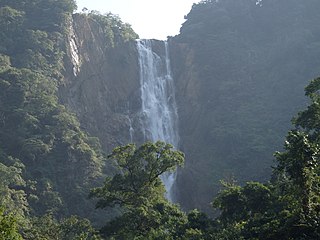
Uttara Kannada is a fifth largest district in the Indian state of Karnataka, It is bordered by the state of Goa and Belagavi districts to the north, Dharwad District and Haveri District to the east, Shivamogga District, and Udupi District to the south, and the Laccadive Sea to the west. Karwar is the district headquarters, Kumta and Sirsi are the major commercial centers in the district. The district's agroclimatic divisions include the coastal plain consisting of Karwar, Ankola, Kumta, Honnavar Bhatkal taluks and Malenadu consisting of Sirsi, Siddapur, Yellapur, Haliyal, Dandeli, Joida, Mundgod taluks.

Padmanabhapuram is a town and a municipality near Thuckalay in Kanyakumari district in the Indian state of Tamil Nadu. As of 2011, the town had a population of 21,342. Padmanabhapuram was the capital of Travancore state in the past. In 1795, the King of Travancore, Rama Varma (known as Dharma Raja moved the capital from Padmanabhapuram to Thruvananthapuram. At that time the boundaries of Travancore state included half the area of modem Kerala state. In 1947, after independence, Padmanabhapuram became part of Travancore-Cochin state When Indian states ware reorganized on the basis of language. In 1957, Padmanabhapuram along with other Tamil-speaking areas were ceded to Madras State, while the Malayalam-speaking areas became part of Kerala. Later the name of Madras State was changed to Tamil Nadu.

Tirunelveli district is one of the 38 districts of Tamil Nadu state in India. It is the largest district in terms of area with Tirunelveli as its headquarters. The district was formed on 1 September 1790 by the British East India Company and comprised the present Tirunelveli and Thoothukudi, Tenkasi and parts of Virudhunagar and Ramanathapuram district. As of 2011, the undivided district had a population of 30,77,233.
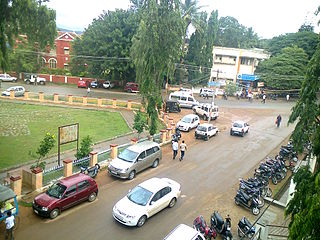
Chikmagalur previously known as Kiriya-Muguli is a city and the headquarters of Chikmagalur district in the Indian state of Karnataka. Located on the foothills of the Mullayanagiri peak of the Western Ghats, the city attracts tourists from around the world for its pleasant and favourable hill station climate, tropical rainforest and coffee estates. The pristine Baba Budangiri lies to the north of Chikmagalur where it's believed Baba Budan first introduced coffee to India.
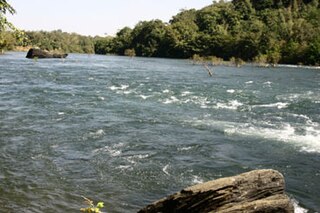
Dandeli is a taluk in Uttara Kannada district of Karnataka, India, in the Malenadu region.
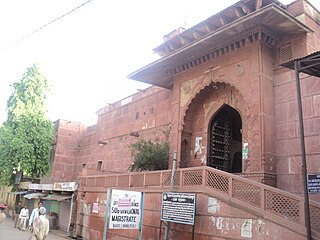
Bari is a city and a municipality in Dholpur district in the state of Rajasthan, India. Bari came into existence as a Pargana of princely state of Dholpur during the rule of Rana Ram Singh of Dholpur.
Iriveri is a census town in Kannur district in the Indian state of Kerala.

Kalliasseri is a census town in Kannur district in the Indian state of Kerala. Kalliaseri Panchayat comprises two villages: Kalliasseri and Irinave.
Kannapuram is a census town and grama panchayat in Kannur district of North Malabar region in the Indian state of Kerala.
Umarkhed is a Municipal council in Yavatmal district of Indian State of Maharashtra. Audumber Nagari is the name given to Umarkhed city in Maharashtra, India, before the Mughal invasion.

Kottiyoor is a Township, Village and Grama Panchayat situated in eastern hilly area of Kannur district in Kerala state. Kottiyoor is the 23rd Wildlife Sanctuary of Kerala, located in the serene hills of Western Ghats. The ancient pilgrimage conducted here yearly, called 'Kottiyoor Vysakha Mahotsavam' attracts around 50,000 devotees every year. The Vavali river flows through Kottiyoor.

Mayyil is a Census Town and Grama Panchayat in Kannur District of Kerala State. Mayyil Panchayat established in 1962 by merging the villages of Kayaralam, Mayyil and Kandakkai.
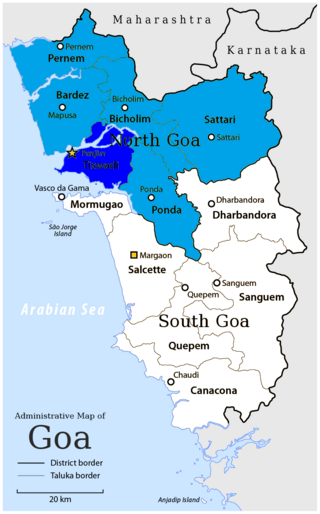
Tiswadi, formerly known as Ilhas, is a taluka in the district of North Goa, situated in the Indian coastal state of Goa. It is an estuarine island situated on the confluence of the Mandovi and Zuari rivers. It was one of the first territories to be annexed by the Portuguese in the 16th century. Both the state capital Panaji, and the erstwhile capital Old Goa lie within the sub-district. It is the biggest and the most populated of the six major islands between the Mandovi and Zuari rivers.
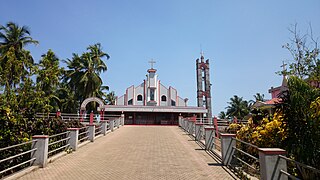
Naravi is a panchayat village in Belthangady taluk, Dakshina Kannada, in the foothills of the Western Ghats of India. There are two villages in the Naravi gram panchayat: Naravi and Kuthluru. It is 58 km from Mangalore and 25 km from Karkala towards Dharmasthala. Naravi is known for Sri Sooryanarayana temple, one of the two well known Sun temples, the other of which is at Konark. The village's name came from "Naa Ravi" in Kannada, which means no visible sunlight because of forest at daytime. It also has Sri Veenugopalakrishna Temple, which has a beautiful idol of Krishna carrying a child in his hands. Those who don't have children come to this statue of Krishna to pray for children.

Pulingome is a village in Kannur District of Kerala state, India.

Pattuvam is a village in Kannur district in the Indian state of Kerala. It is bordered by the Kuppam river on the north, west and south. It shares a border with Taliparamba municipality on the east. A bridge over the river connects Pattuvam to Kottakkeel of Ezhome village in the northwest.
Chuzhali is a village in the Kannur district of the Indian state of Kerala.

Kannavam is a Village in Thalassery Taluk in Kannur District of Kerala State, India. It comes under Chittaripparamba Panchayat. It is located 37 km (23 mi) south east of District headquarters Kannur, 13 km (8.1 mi) east of Kuthuparamba and 466 km (290 mi) from State capital Thiruvananthapuram
Manantheri is a census town near Kuthuparamba in Kannur district in the Indian state of Kerala.
Balkunje is a panchayat town located at Mangalore taluk in Dakshina Kannada district in the Indian state of Karnataka. It is on the banks of Shambhavi River. It is next to the small village of Kavathar, karnire. Its nearest town is Palimar in Udupi District.














